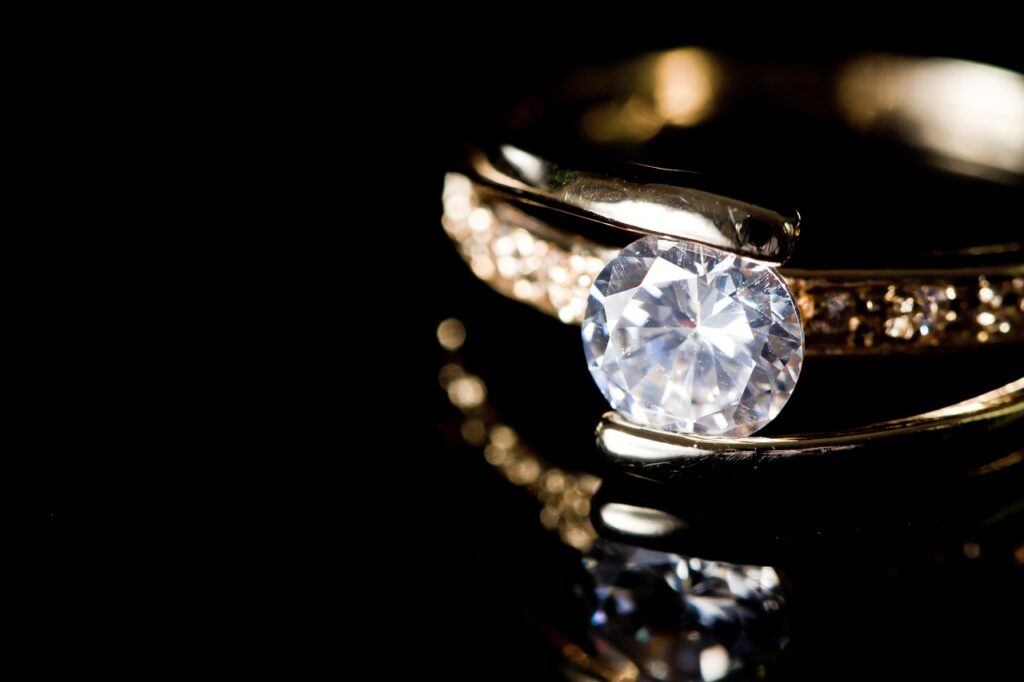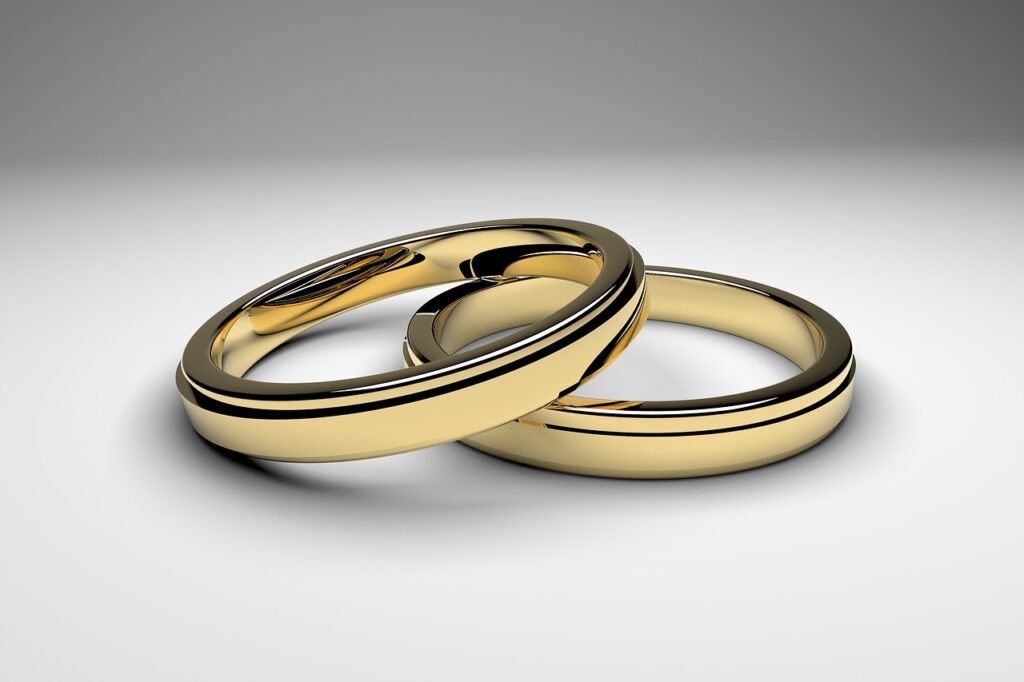Tusharika Nagar
Elegance has evolved; it’s conscious, captivating, and within reach. Today’s lab-grown diamond rings deliver the same brilliance as mined diamonds, minus the inflated cost and ethical concerns.
Think brilliance, clarity, and sparkle, at a fraction of the price.
And the best part? You can find certified Lab Grown Diamond Rings at Shop LC that blend sustainability with style and meaning. Each piece offers unmatched value and purpose, with every purchase helping provide meals to children in need through their Your Purchase Feeds initiative.
It’s elegance that gives back.
But how do you navigate the world of cuts, carats, and certifications without confusion?
This guide simplifies the process. Whether marking a milestone, planning a proposal, or buying your first diamond ring, you’ll find the clarity to shop smart without sacrificing what matters most.
Let’s decode the brilliance.
WHY GO LAB-GROWN?

A Lab-Grown Diamond Ring is more than a trend—it’s a modern luxury backed by science, ethics, and smart economics.
These diamonds aren’t imitations. They’re chemically and visually identical to mined diamonds, created under controlled conditions that mimic Earth’s natural processes. The result? Purity, brilliance, and value without compromise.
Why smart buyers choose lab-grown:
- Real diamonds: Same sparkle, same structure, same story; minus the mine.
- Lower price tag: Typically 30–50% less than mined diamonds of the same quality.
- Ethically sourced: No environmental damage or conflict zones.
- Wider options: Bigger stones, better clarity, more carats for your budget.
Search data shows that interest in lab-grown diamonds has grown 400% in the past five years. With the rise of conscious luxury, modern buyers are choosing value without losing beauty.
Whether shopping for a classic solitaire or a show-stopping halo ring, starting with a lab-grown stone is the first step toward a budget-savvy, meaningful purchase.
SET A REALISTIC BUDGET
Before diving into diamond specs, determine how much you want to spend. Your budget sets the foundation for every decision that follows—from carat size to metal type.
Lab-grown diamonds give you more room to breathe. With prices significantly lower than mined diamonds, you can afford higher quality without exceeding your limits.
Typical budget ranges
- Under $500: Great for minimal solitaires, petite halos, or stackable styles
- $500–$1,000: Ideal for certified solitaires and mid-sized stones with good clarity
- Above $1,000: Luxurious, statement-making pieces with high-carat stones and premium settings
Instead of chasing the highest carat weight, prioritize cut and clarity. These two elements influence sparkle and beauty far more than size alone.
Think of your budget not as a limit but as a guide to finding the perfect balance between quality and value.
UNDERSTAND THE 4CS
To choose the right Lab-Grown Diamond Ring, you must understand the 4Cs: cut, color, clarity, and carat. These four factors directly impact beauty, brilliance, and price.
CUT
Cut defines how well the diamond reflects light.
Look for Excellent or Ideal cuts. They create maximum sparkle, even in smaller stones. A well-cut diamond will shine brighter than a larger, poorly cut one.
COLOR
Color refers to the diamond’s tint.
Lab-grown diamonds range from D (colorless) to K (faint yellow).
For best value:
- D–F: Bright, icy appearance
- G–H: Slight warmth, still visually stunning
- I–K: Budget-friendly with a soft, vintage glow
CLARITY
Clarity measures internal flaws or inclusions.
Lab diamonds often score well in clarity. Choose:
- VS1–VS2: Minor inclusions, invisible to the eye
- SI1–SI2: Slight inclusions, excellent value for everyday rings
CARAT
Carat affects both size and cost.
A 0.90-carat lab-grown diamond can look identical to a 1-carat stone but cost significantly less. Focus on appearance, not just the number.
Choosing the right balance of the 4Cs ensures your ring shines with beauty and intention, without overspending.
PICK THE RIGHT SETTING
The setting defines your ring’s personality. It frames the stone, adds character, and affects durability, making it as important as the diamond itself.
A smart setting enhances the brilliance of your Lab-Grown Diamond Ring and ensures it suits the wearer’s lifestyle.
POPULAR SETTING STYLES
Solitaire
- Classic and timeless
- Emphasizes the center diamond
- Minimal metal keeps it budget-friendly
Halo
- Surrounds the center stone with a circle of smaller diamonds
- Makes smaller carats appear larger
- Adds brilliance without increasing cost dramatically
Three-Stone
- Represents past, present, and future
- Perfect for milestone gifts or engagement
- Offers more sparkle without requiring a large center stone
Bezel
- Encircles the diamond with metal
- Highly secure for active lifestyles
- Modern, clean look
When shopping within a budget, choose a setting that enhances the stone you can afford. For example, a halo setting can make a smaller diamond look nearly twice its size.
CHOOSE THE METAL WISELY
The metal you choose for your Lab-Grown Diamond Ring shapes its final look, feel, and longevity. It also influences price, sometimes significantly.
Different metals suit different budgets and personal styles. Choose one that complements the diamond, flatters the skin tone, and withstands daily wear.
COMMON METAL OPTIONS

Sterling Silver
- Most affordable option
- Elegant and lightweight
- Prone to tarnishing over time; best for occasional wear
Gold Vermeil
- Sterling silver base with thick gold plating
- Affordable luxury
- Available in yellow, white, or rose tones
- May wear down with heavy use
14K or 18K Gold
- Durable and timeless
- 14K offers strength; 18K offers richer color
Ideal for daily wear
Platinum
- Naturally white, heavy, and hypoallergenic
- Resistant to wear and corrosion
- It is the highest in price, but it lasts for generations
MATCH METAL TO DIAMOND TONE
- Colorless diamonds (D–F) pair best with white metals like platinum or white gold
- Near-colorless or warm-toned diamonds (G–J) glow beautifully in yellow or rose gold
Choosing the right metal isn’t just about style—it’s a strategic move to elevate the entire ring without increasing the diamond’s cost.
CERTIFICATION MATTERS
A diamond without certification is a risk.
Even with Lab-Grown Diamond Rings, certification protects your investment, verifies quality, and offers peace of mind.
Reputable certification ensures the diamond was ethically grown, graded accurately, and priced reasonably. It also lets you compare diamonds objectively, even when shopping online.
Look for these trusted grading labs:
- IGI (International Gemological Institute)
- Most common for lab-grown diamonds; trusted by major retailers
- SGL (Solitaire Gemmological Laboratories)
- Offers detailed grading for clarity, color, and authenticity
- GIA (Gemological Institute of America)
- Recognized globally, but certifies fewer lab-grown stones than IGI or SGL
What certification should include:
- Complete 4C grading: cut, color, clarity, carat
- Growth method: HPHT or CVD
- Laser inscription ID on the diamond’s girdle
- Origin statement confirming lab-grown status
Avoid sellers who provide only “in-house” or vague grading. Insist on third-party certification for every purchase, no matter the price.
Certification transforms a beautiful ring into a trustworthy purchase and helps protect resale value.
FINAL TIPS BEFORE YOU BUY
A Lab-Grown Diamond Ring is more than a purchase. It is a personal investment. Before you click add to cart, take a moment to ensure your choice is thoughtful, protected, and made to last.
Here’s what smart buyers always do:
1. Review the return policy
Make sure the retailer offers at least a 30-day return or exchange window. Flexibility matters, especially for gifting.
2. Ask about warranty and repairs
Choose a ring backed by a strong service promise. Shop LC, for example, offers extended protection plans to cover resizing, repairs, or replacements.
3. Confirm certification
Insist on third-party grading from IGI, SGL, or GIA. This protects you against overpaying or receiving lower-quality stones.
4. Read real reviews
Look beyond star ratings. Focus on sparkle, comfort, shipping experience, and customer service comments.
5. Know your ring size
Getting the fit right the first time saves time and money. Many retailers offer sizing guides or free resizes. Check before buying.
6. Consider long-term wear
Think about daily use. Will the ring hold up over time? Does the setting suit your lifestyle? A secure setting and durable metal go a long way.
Buying a lab-grown diamond ring is a meaningful decision, but it doesn’t have to be complicated. With the right knowledge and a trusted retailer, you can confidently choose a ring that feels like forever, without the pressure of overspending.
